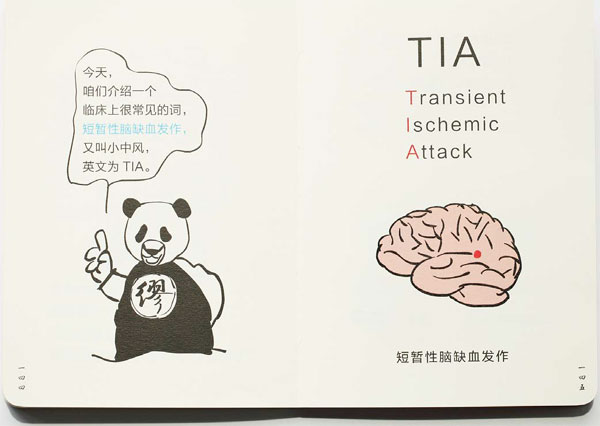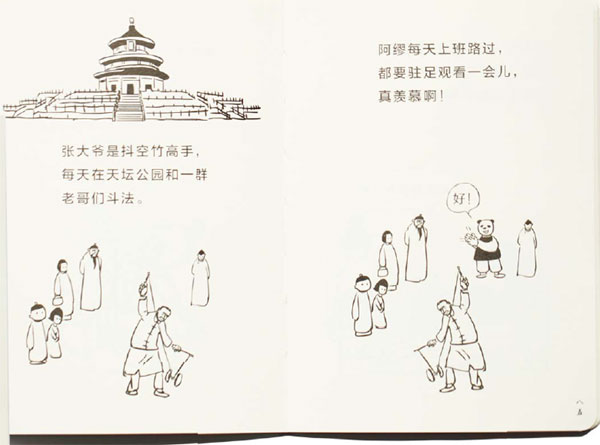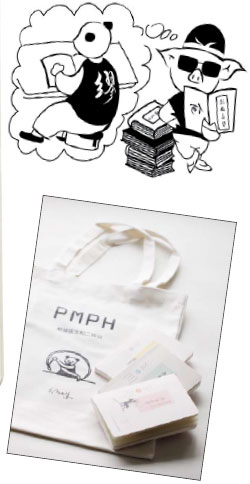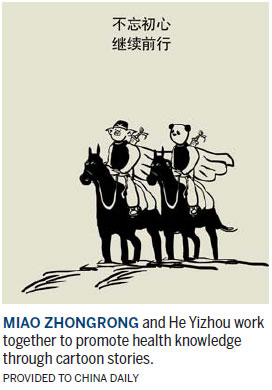Medical advice that has readers in stitches
Updated: 2016-09-23 07:58
By Liu Zhihua(China Daily Europe)
|
|||||||||
Dr Panda has one mission: To rid the world of medical mumbo jumbo, so that people have a clear understanding of various diseases and how to prevent them.
And while he's raising awareness, he manages to raise a few smiles, too.
This ursine expert is the central character of Little Doctor Cartoons, an animated series devised by real-life medics Miao Zhongrong and He Yizhou.




They share the animations via an account on WeChat, the Chinese social media app, and have so far clocked up more than 70,000 followers.
"Acquiring medical knowledge is good for everyone," says Miao, an expert in cerebrovascular disease at Tiantan Hospital in Beijing. "This kind of knowledge can save lives, and we're happy with what we're doing."
Dr Panda comes from Lanzhou, capital of Gansu province, and runs a restaurant selling his hometown's specialty noodles. He spends much of his time chatting with his friend, Sha Daidai (literally "the silly one"), about health issues, and is often sought out by customers seeking help with an ailment.
The first cartoon went online in March, with the WeChat account gaining about 10,000 new followers every month since then, according to data from Tencent, the technology company that runs the app.

"Reading Little Doctor Cartoons is one of the most enjoyable things for me in a day," one reader says. "The illustrations are simple but lifelike. And with the humorous conversation, the cartoon makes dry, complex medical information funny and easy to remember."
A story about appendicitis posted on July 31 received more than 12,500 views. In it, Dr Panda helps a customer who complains of severe pain in his lower right abdomen as well as fever, nausea and vomiting. After diagnosing the customer, he explains to Sha Daidai what appendicitis is, how it is detected and how it can be treated, including via surgery.
As with other stories, readers use the comments section to discuss their experiences with the condition, or similar ailments, and express thanks for what the cartoons have taught them.
Miao says he writes the scripts, often while lying in bed before 6 am, and then sends them to He, an intensive care specialist at Zhongshan Hospital in Shanghai, who draws the illustrations, often late at night after a busy shift. Each cartoon takes about two hours to sketch.
Although the stories are fictional, most are based on the doctors' personal experiences, or on stories told to them by patients or fellow medical professionals.
Cartoons can help doctors to communicate with patients, as it is a way to explain medical issues and possible treatments, or simply just make them feel better, Miao says.
He Yizhou says he started drawing cartoons in about 1999 but became fascinated with them two years later while studying for his master's degree.
He set up the Little Doctor Cartoons account on WeChat in the spring of 2014 after posting the illustrations on other platforms, such as blogs and other social media.

At first, the cartoons focused on his observations about the life of a doctor. However, this year, at the suggestion of a mutual friend, He and Miao began working together, focusing on health education.
The pair says China has a shortage of health education materials that cover a broad range of topics and are interesting to ordinary people - something they are keen to help remedy.
"People need accurate medical information, but China invests very little in public health education and patients know little about disease prevention and treatment," says Miao, who sits on the board of national medical associations in the fields of stroke, cerebrovascular disease and neurology.
In developed countries, health education brochures with interesting graphics or cartoons that help people to easily understand disease prevention and treatment are widely available, but this is not the case in China, he adds.
Disputes between doctors and patients in Chinese hospitals have been a major problem in recent years, with some incidents ending in death. Miao believes such violence would be reduced if clear and accurate medical information was more readily available.
Patients often have unrealistic expectations about the ability of doctors to offer remedies, he says, which can cause tension in the doctor-patient relationship when the outcome of a treatment is disappointing. Not all illnesses are curable, and sometimes it can even be difficult to correctly diagnose a condition.
"As Hippocrates said, 'Cure sometimes, treat often, comfort always'. Despite patients' best hopes, doctors are not almighty, but many patients are unaware of this," Miao says. "It's important for doctors to be able to give information to patients in a way that is easy to understand. We hope to make medicine knowledge more accessible to every one."
He Yizhou says he hopes that eventually the cartoons will be translated into other languages and will endure for decades to come, just like Merck Manual of Diagnosis and Therapy, the oldest continuously published English-language medical textbook.
liuzhihua@chinadaily.com.cn
(China Daily European Weekly 09/23/2016 page1)
Today's Top News
ODI led for first time by private firms
Nanjing's culture and creativity on display in London
State of emergency declared in US city amid protests
Universities given boost in rankings
Demand for Mandarin rises in UK
China 'capable of keeping medium-to-high growth'
Li tells Obama of opposition to THAAD deployment
Greek vows to improve refugee situation on island
Hot Topics
Lunar probe , China growth forecasts, Emission rules get tougher, China seen through 'colored lens', International board,
Editor's Picks

|

|

|

|

|

|







